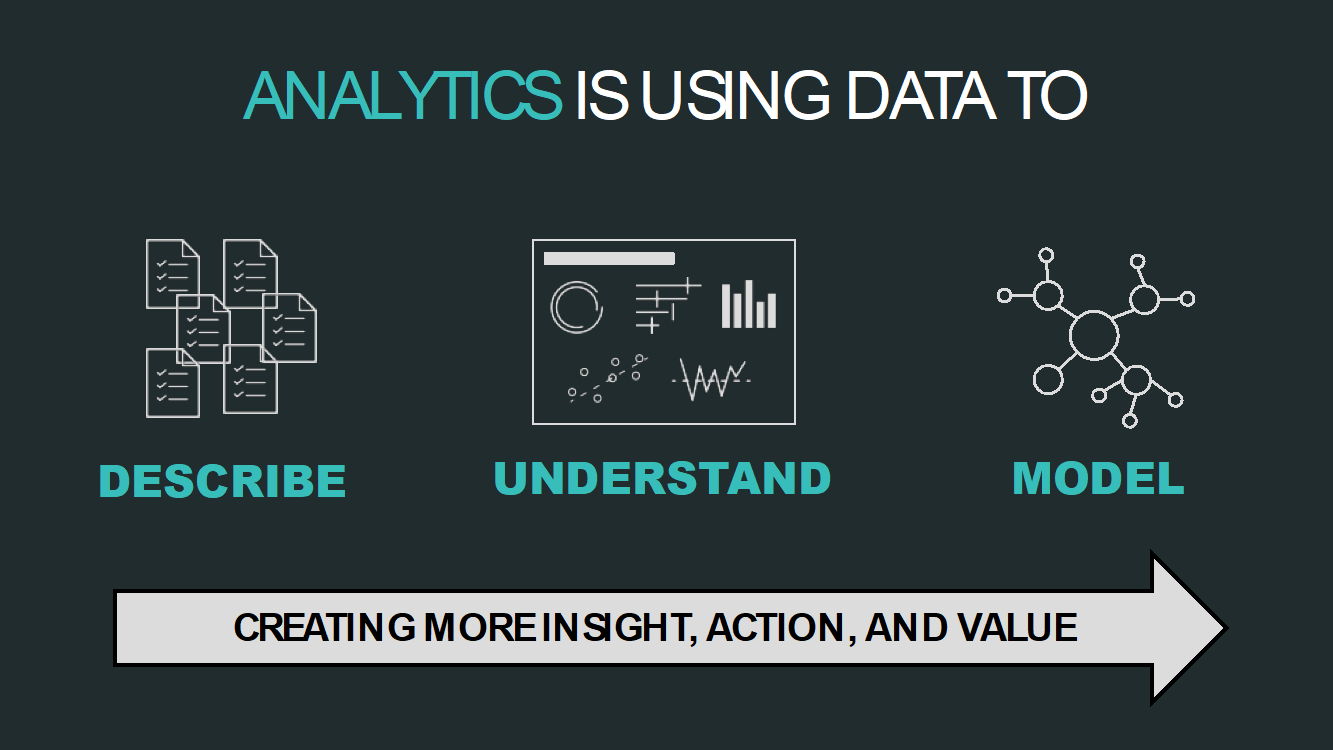This series unpacks the different types of analytics that exist and the best applications for each. Understanding these distinct varieties better equips us to operate successfully in the analytics space and navigate its cyclical nature effectively.
Call me crazy, but I think this whole data thing has legs. At this point, it’s a cliché to say that data is the new oil or that data maturity is vital to the business. Everybody wants to be a data-driven company, but often the mantras we espouse don’t quite make it into the day-to-day work of our employees.
From mom-and-pop stores to Fortune 100 companies, many of the same fundamental issues crop up: tunnel vision from focusing only on current needs; lack of proper infrastructure to support current needs (let alone future needs); and a glut of manual processes that are error prone and time consuming.
What Is Analytics Really?
If this sounds familiar, maybe it’s time to take a step back and do an honest assessment of your capabilities and structure. This should be a comprehensive look at your processes, training, people, tools and infrastructure to help you understand exactly where you are and what gaps you are currently experiencing. Usually, in consulting, this is where we pull out a maturity model and give you a rating on some arbitrary scale. However, I think we both know that the analytics world is more complicated than a simple A to B linear progression.
So, if it’s not a simple progression from descriptive analytics to prescriptive analytics, then what is analytics? Analytics is using data to generate insight and drive action to produce value. It’s a self-reinforcing cycle that builds upon itself. That cycle is supported by an ecosystem that needs to be healthy for it to thrive. We’ll tackle each of these aspects in this series of posts, but for now, let’s dig into the nuts and bolts of analytics.
Analytics Is About Value
When we bring on new consultants, I always give a talk to help them understand artificial intelligence, machine learning and data science. Over time, I found I needed to start at the very beginning to help others better understand the landscape because no matter what the industry hype tells you, you can’t start your analytics journey with neural networks and expect to succeed.
Analytics starts with using data to describe our world. From there, it moves to finding patterns in order to more fully understand what’s happening below the surface. It then ultimately leads us to apply our knowledge to produce models. Within each type, we are creating more and more business value.

The next blog post in this series will focus on the first kind of analytics—descriptive analytics—so be on the lookout for a deeper dive into the analytics essentials.


